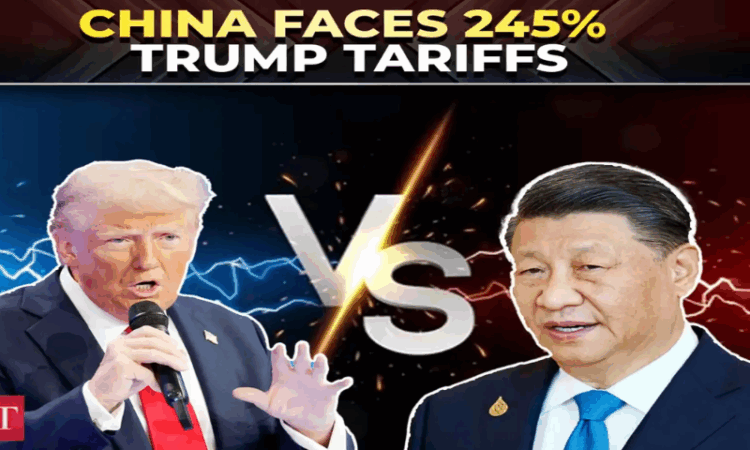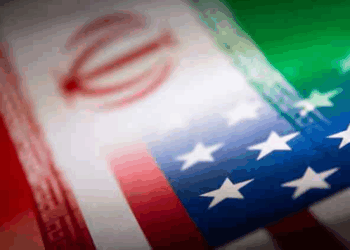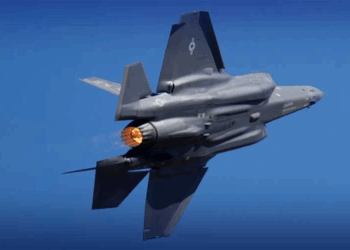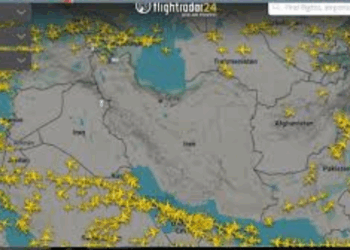Washington, April 16, 2025: The United States has announced tariffs of up to 245% on Chinese imports in response to what it called “retaliatory actions” by Beijing, marking a dramatic escalation in the ongoing trade war between the two global economic giants.
The White House statement comes as President Donald Trump authorized a new investigation into national security risks posed by U.S. reliance on imported critical minerals—including cobalt, lithium, nickel, and rare earth elements—essential for manufacturing electric vehicle batteries and other advanced technologies.
The executive order notes that the United States is “dependent on foreign sources” for these strategic materials, which exposes the country to “serious, sustained, and long-term supply chain shocks.” It warns that such dependency poses potential national security threats.
Previously, the tariff standoff saw the U.S. impose 145% tariffs on Chinese goods, while China retaliated with 125% duties on American imports. However, with this latest move, Washington appears to be stacking additional levies, though there remains some ambiguity. The White House has not confirmed whether the 245% figure represents new tariffs or the cumulative total currently applied.
Earlier today, a senior Chinese official acknowledged that the escalating tariffs were putting “pressure” on China. However, Beijing simultaneously reported better-than-expected economic data: GDP growth of 5.4% in the first quarter of 2025, industrial output up 6.5%, and retail sales rising 4.6% year-on-year.
Despite these gains, Chinese authorities warned of a “complex and severe” global economic climate, emphasizing the need for greater efforts to spur domestic growth and consumption.
In a strongly worded statement, Foreign Ministry spokesman Lin Jian said:
“If the U.S. truly wants to resolve this issue through dialogue, it must stop blackmailing and engage China on the basis of equality, mutual respect, and benefit.”
President Trump, meanwhile, insisted that “the ball is in China’s court,” claiming that the U.S. holds the upper hand.
“China needs to make a deal with us. We don’t need to make a deal with them,” Trump said, a day after accusing Beijing of walking away from a major Boeing aircraft deal.
The President has long criticized countries such as China, India, and Brazil for imposing higher tariffs on American goods than the U.S. does on theirs. Promoting reciprocal tariffs was a key theme of his re-election campaign, aimed at pressuring trading partners to lower duties or boost domestic U.S. manufacturing.
As part of this strategy, Trump has also introduced a 10% baseline tariff on imports from several trading partners and slapped a 20% “fentanyl tax” on Chinese goods, citing Beijing’s failure to curb the drug’s production and export. An additional 125% tariff was imposed for alleged “unfair trade practices.”
By April 9, cumulative U.S. tariffs on Chinese imports exceeded 100%, triggering significant market turbulence globally. Although Trump has since paused some tariffs, China was not included in the exemptions.
In retaliation, Beijing suspended imports of sorghum, poultry, and bonemeal, imposed restrictions on 27 U.S. companies, and filed a formal complaint with the World Trade Organization (WTO).
The WTO has warned of serious implications, predicting global merchandise trade could contract by 0.2% in 2025. It also cautioned that “severe downside risks” could lead to an even steeper decline of 1.5%.
In response to U.S. actions, China has intensified diplomatic outreach, seeking closer ties with India and the European Union. Chinese Foreign Minister Wang Yi recently urged New Delhi and Beijing to “make the elephant and dragon dance” and jointly resist hegemonism and power politics.
Beijing also called on the EU to stand together against “unilateral bullying” by the U.S., echoing President Xi Jinping’s earlier call to uphold international fairness and justice.








